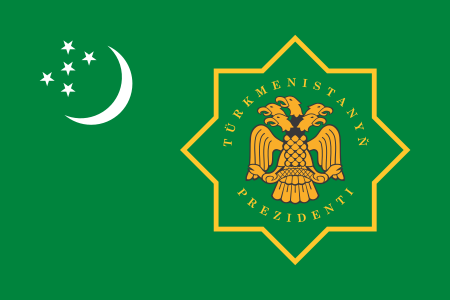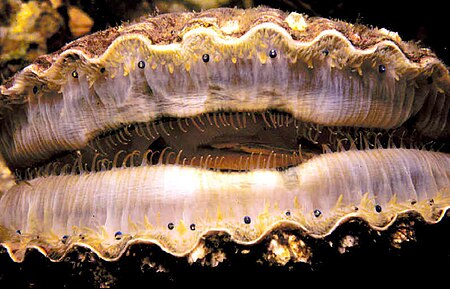Germanic substrate hypothesis
|
Read other articles:

Auto race held at Bristol, United States Bass Pro Shops Night RaceNASCAR Cup SeriesVenueBristol Motor SpeedwayLocationBristol, Tennessee, United StatesCorporate sponsorBass Pro ShopsFirst race1961 (1961)Distance266.5 miles (428.890 km)Laps500Stages 1/2: 125 eachFinal stage: 250Previous namesVolunteer 500 (1961–1979)Busch Volunteer 500 (1980)Busch 500 (1981–1990)Bud 500 (1991–1993)Goody's 500 (1994–1995)Goody's Headache Powder 500 (1996–1999)goracing.com 500 (2000)Sharpie 500 …

South Korean politician In this Korean name, the family name is Hwang. The HonourableHwang Woo-yea황우여Deputy Prime Minister of South KoreaIn office19 November 2014 – 12 January 2016Serving with Choi Kyoung-hwanPresidentPark Geun-hye Hwang Kyo-ahn (Acting)Prime MinisterChung Hong-won Lee Wan-koo Choi Kyoung-hwan (Acting) Hwang Kyo-ahnPreceded bySeo Nam-seeSucceeded byLee Joon-sikMinister of EducationIn office8 August 2014 – 12 January 2016Preceded bySeo Nam-sooS…

韓國-馬來西亞關係 马来西亚 韩国 代表機構马来西亚驻韩国大使馆韩国驻马来西亚大使馆 韩国-马来西亚关系(韩语:대한민국-말레이시아 관계,馬來語:Hubungan Korea Selatan–Malaysia),亦称马来西亚-韩国关系,指韩国与马来西亚两国之间的双边关系。目前两国为“战略伙伴关系”。 历史 韩国与马来亚联合邦于1960年2月23日建交[1]。1962年5月,韩国在马来亚首都吉隆�…

此條目可参照英語維基百科相應條目来扩充。 (2021年5月6日)若您熟悉来源语言和主题,请协助参考外语维基百科扩充条目。请勿直接提交机械翻译,也不要翻译不可靠、低品质内容。依版权协议,译文需在编辑摘要注明来源,或于讨论页顶部标记{{Translated page}}标签。 约翰斯顿环礁Kalama Atoll 美國本土外小島嶼 Johnston Atoll 旗幟颂歌:《星條旗》The Star-Spangled Banner約翰斯頓環礁地�…

Rural municipality in Saskatchewan, Canada See also: Hillsdale (disambiguation) Rural municipality in Saskatchewan, CanadaHillsdale No. 440Rural municipalityRural Municipality of Hillsdale No. 440Location of the RM of Hillsdale No. 440 in SaskatchewanCoordinates: 52°48′32″N 109°27′50″W / 52.809°N 109.464°W / 52.809; -109.464[1]CountryCanadaProvinceSaskatchewanCensus division13SARM division6Formed[2]January 1, 1913Government[3] •&…

土库曼斯坦总统土库曼斯坦国徽土库曼斯坦总统旗現任谢尔达尔·别尔德穆哈梅多夫自2022年3月19日官邸阿什哈巴德总统府(Oguzkhan Presidential Palace)機關所在地阿什哈巴德任命者直接选举任期7年,可连选连任首任萨帕尔穆拉特·尼亚佐夫设立1991年10月27日 土库曼斯坦土库曼斯坦政府与政治 国家政府 土库曼斯坦宪法 国旗 国徽 国歌 立法機關(英语:National Council of Turkmenistan) 土�…
2020年夏季奥林匹克运动会波兰代表團波兰国旗IOC編碼POLNOC波蘭奧林匹克委員會網站olimpijski.pl(英文)(波兰文)2020年夏季奥林匹克运动会(東京)2021年7月23日至8月8日(受2019冠状病毒病疫情影响推迟,但仍保留原定名称)運動員206參賽項目24个大项旗手开幕式:帕维尔·科热尼奥夫斯基(游泳)和马娅·沃什乔夫斯卡(自行车)[1]闭幕式:卡罗利娜·纳亚(皮划艇)[2…

لمعانٍ أخرى، طالع ستيفن كابلان (توضيح). هذه المقالة يتيمة إذ تصل إليها مقالات أخرى قليلة جدًا. فضلًا، ساعد بإضافة وصلة إليها في مقالات متعلقة بها. (نوفمبر 2019) ستيفن كابلان معلومات شخصية الميلاد سنة 1959 (العمر 64–65 سنة) مواطنة الولايات المتحدة الحياة العملية المدر…

Pour les articles homonymes, voir Salomé. SaloméFormats Pièce de théâtre en quatre actes (en)Œuvre dramatique (d)Langue FrançaisAuteur Oscar WildeGenre TragédieSujet SaloméDate de création 1891Lieu de publication FrancePays Francemodifier - modifier le code - modifier Wikidata Illustration d'Aubrey Beardsley pour Salomé : la robe de paon Salomé est une tragédie d'Oscar Wilde dont la version originale de 1891 est écrite en français. Une traduction en anglais a suivi trois ans …

Ethiopian governor and noble (1825/1830–1900) Darge Sahle SelassieBorn1825[1] 1827[2] or 1830Ankober[2]Died23 March 1900 (aged 70-75)FatherNegus Sahle Selassie of ShewaMotherWoizero WurigeReligionEthiopian Orthodox Darge Sahle Selassie (circa 1825–1830[note 1] – 23 March 1900), Horse name Abba Gersa, was a 19th-century Ethiopian nobleman , provincial governor, general and a trusted councillor of his nephew Emperor Menelik II.[1][3] Ancest…

Head of state and government of El Salvador President of the Republic of El SalvadorPresidente de El SalvadorPresidential sealIncumbentNayib Bukelesince 1 June 2019Executive branch of the Government of El SalvadorTypeHead of stateHead of governmentResidenceCasa PresidencialTerm length5 years, renewable once consecutivelyConstituting instrumentConstitution of El SalvadorFormation22 February 1841First holderJuan José GuzmánSuccessionLine of successionDeputyVice President of El SalvadorSalar…

لمعانٍ أخرى، طالع بينفيلد (توضيح). بينفيلد الإحداثيات 43°09′40″N 77°26′48″W / 43.161111111111°N 77.446666666667°W / 43.161111111111; -77.446666666667 [1] تاريخ التأسيس 1810 تقسيم إداري البلد الولايات المتحدة[2] التقسيم الأعلى مقاطعة مونرو خصائص جغرافية المسا…

Questa voce sull'argomento contee dell'Indiana è solo un abbozzo. Contribuisci a migliorarla secondo le convenzioni di Wikipedia. Contea di DelawareconteaLocalizzazioneStato Stati Uniti Stato federato Indiana AmministrazioneCapoluogoMuncie Data di istituzione1827 TerritorioCoordinatedel capoluogo40°13′48″N 85°24′00″W40°13′48″N, 85°24′00″W (Contea di Delaware) Superficie1 026 km² Abitanti118 769 (2000) Densità115,76 ab./km² Altre informazioni…

American CIA officer (1924–2017) For other people named James or Jim McCord, see James McCord (disambiguation). James McCordMcCord's mugshot after his arrest, 1972BornJames Walter McCord Jr.(1924-01-26)January 26, 1924Waurika, Oklahoma, U.S.DiedJune 15, 2017(2017-06-15) (aged 93)Douglassville, Pennsylvania, U.S.Other namesEd Martin[1]EducationUniversity of Texas, Austin (BBA)George Washington University (MS)Occupation(s)former CIA officer and electronics expertKnown forP…

Australian Labor Party politician For the Australian footballer, see Luke Foley (footballer). The HonourableLuke FoleyMP37th Leader of the Opposition in New South WalesElections: 2015In office5 January 2015 – 8 November 2018PremierMike BairdGladys BerejiklianDeputyLinda BurneyMichael DaleyPreceded byJohn RobertsonSucceeded byMichael DaleyLeader of the Labor Party in New South WalesIn office5 January 2015 – 8 November 2018DeputyLinda BurneyMichael DaleyPreceded byJohn Robert…

COVID-19 pandemic in IdahoDiseaseCOVID-19Virus strainSARS-CoV-2LocationIdaho, U.S.Index caseAda CountyArrival dateMarch 13, 2020(4 years, 3 months and 4 days)[1][2]Confirmed cases526,118Hospitalized cases19,729 (cumulative)Critical cases3,265 (cumulative)Deaths5,479Vaccinations978,812Government websitecoronavirus.idaho.gov The first case relating to the COVID-19 pandemic in Idaho was confirmed on March 13, 2020, when a Boise woman tested positive.[1] As of …

Otome wa Boku ni Koishiteru処女はお姉さまに恋してる (Windows) 乙女はお姉さまに恋してる (PS2/PSP)GenreHarem, Romansa PermainanPengembangCaramel BoxPenerbitCaramel Box (Windows)Alchemist (PS2/PSP)MangaGamer (Windows)GenreEroge, Novel visualPlatformWindows, PS2, PSPRilis28 Januari 2005 (Windows) MangaPengarangCaramel BoxIlustratorKanao ArakiPenerbitASCII Media WorksMajalahDengeki DaiohDemografiShōnenTerbitNovember 2006 – Agustus 2008Volume2 Seri animeOtoboku: Maidens Are …

زكاةمعلومات عامةجزء من أركان الإسلام الدِّين الإسلام الموضوع الرئيس الفقر في الإسلام احتفالاً بـ الغني يُصوِّر نصاب الزكاة المشغل فقيرمسكينMiskin (en) مواقع الويب corpus.quran.com… qurananalysis.com… تعديل - تعديل مصدري - تعديل ويكي بيانات جزء من سلسلة مقالات حولالإسلام العقيدة الإيمان توحي�…

海扇蛤科 科学分类 界: 动物界 Animalia 门: 軟體動物門 Mollusca 纲: 双壳纲 Bivalvia 目: 海扇蛤目 Pectinida 总科: 海扇蛤總科 Pectinoidea 科: 海扇蛤科 PectinidaeRafinesque, 1815 模式属 海扇蛤屬 PectenMuller, 1776 亚科 Camptonectinae Habe, 1977 Palliolinae Korobkov, 1960 Pectininae Rafinesque, 1815 Pedinae Bronn, 1862 扇贝科(学名:Pectinidae),又称海扇蛤科,俗称元贝,是海扇蛤目海扇蛤总科下的一个科,其�…

Infrared space observatory This article is about the space telescope. For other uses, see IRAS (disambiguation). Infrared Astronomical Satellite / Infrarood Astronomische SatellietInfrared Astronomical Satellite in space simulator at JPLMission typeInfrared space observatoryOperator NASA NIVR SERC COSPAR ID1983-004A SATCAT no.13777Websiteirsa.ipac.caltech.edu/Missions/iras.htmlMission durationFinal: 9 months, 26 days Spacecraft propertiesManufacturer Ball Aerospace Fokker Space Holland…